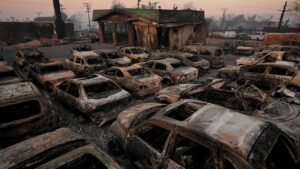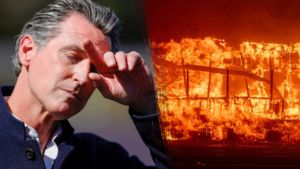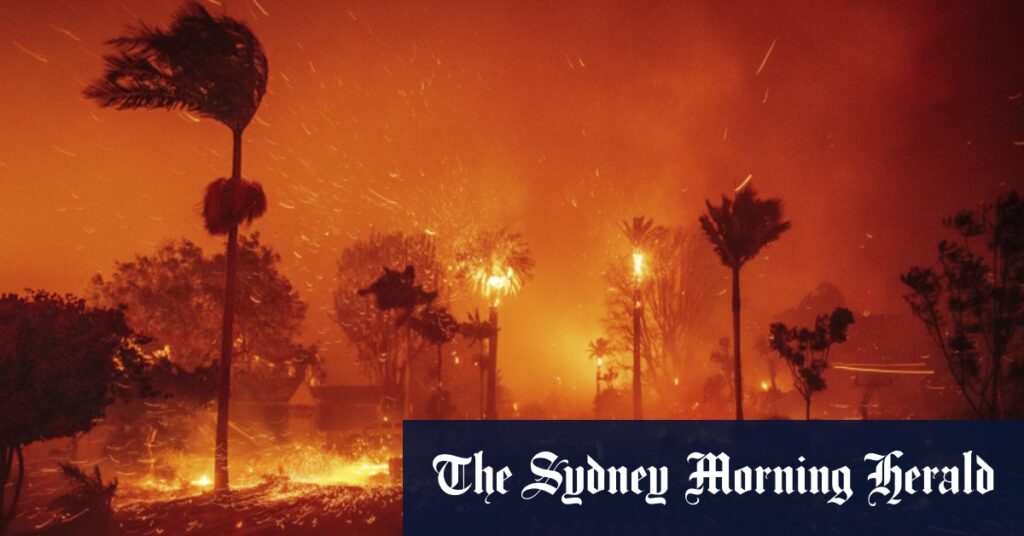Hydroclimate whiplash is driven by the “expanding atmospheric sponge”, the authors said. For every degree the planet warms, the atmosphere can absorb 7 per cent more water. A wetter atmospheric sponge foists more intense, extreme bursts of rainfall, which produces huge fuel loads ready to combust when drought weather strikes.
Human-caused climate change has caused this whiplash to increase by 31 to 66 per cent globally. Rainfall volatility has accelerated, particularly in America, Europe and Australia, the authors wrote.
“The problem is that the sponge grows exponentially, like compound interest in a bank. The rate of expansion increases with each fraction of a degree of warming,” Swain said.
“The planet is warming at an essentially linear pace, but in the last five or 10 years there has been much discussion around accelerating climate impacts. This increase in hydroclimate whiplash, via the exponentially expanding atmospheric sponge, offers a potentially compelling explanation.”
The Climate Council tracked examples of whiplash in a report last year. A deadly blaze destroyed 32 homes during October 2023 in Queensland. The next month, nearby weather stations recorded their highest-ever November rainfall.
Australian cities could burn just as easily as LA, said University of Tasmania pyrogeography expert Professor David Bowman. He was sickened by images of razed streets and shopping strips.
“They aren’t particularly aesthetically nice places, but seeing them burnt to the ground is just horrible. It’s heart-wrenching. Because they’re so safe, and so familiar, and so boring. You’re not usually going to have bulldozers driving down a road, pushing cars out of the way. This is something outside the bounds of normality.
“Nothing like this has ever happened before to a major metropolis, with movie stars having their houses destroyed. It’s got all the ingredients of an enormous, history-defining event.”
Bushfire behaviour is warping under climate change. Fires are burning harder at night, when lower temperatures and higher humidity normally give firefighters a strategic rest. There are more apocalyptic pyrocumolonimbus clouds. And the flames are getting faster.
“If you have a small fire, you can send aircraft to it, you can bomb it with water, you put it out. But what happened with the LA fires was their growth in 12 minutes was just huge,” Bowman said. “The doubling time of the fires was astronomic. That’s a real signature of climate change.”
Bowman has called for a rethink of urban fire risk. Speaking from the peri-urban edge of Hobart – a “sitting duck” for a firestorm like LA – he envisages biodiversity-friendly firebreaks, Indigenous groups practising cultural burning, and better management and thinning-out of overgrown bush. The fireproofing of old houses and enlisting of herbivores such as goats and kangaroos to control rain-fuelled growth might also be needed. “All sorts of innovative things,” he said. “Mix it up, make it fun, make it beautiful.”
The LA tragedy, he said, shows we need safe evacuation zones in cities as well as bushland.
“People are just cottoning on to the idea that now, because of climate change, the footprint of the fire can actually reach out from these interfaces deeper into the suburbs,” Bowman said.
“If you’ve got a dangerous mix of not a well-watered garden, a whole lot of junk on your verandah, an old house with bone-dry dust in the roof … kaboom.”
A pyrocumolonimbus cloud caused by a bushfire near Braidwood created a dramatic backdrop to Parliament House in Canberra in 2019.Credit: Alex Ellinghausen
Our understanding of fire dynamics in the suburbs is lacking. But by studying flames in a lab-based wind tunnel, fire safety expert Dr Maryam Ghodrat at the University of NSW has been trying to plug the gaps.
“The typical set-up used in assessing building vulnerability and susceptibility to fire only considers a single building surrounded by 100 metres of land. But the reality is that many bushfire-prone neighbourhoods have buildings separated by 10 metres,” Ghodrat said.
“There’s still much we don’t understand about how to improve the regulation and advise the property owners. In areas with high-density communities, fire that originates from an ignited house can spread quickly and become difficult to control.”
Ghodrat’s research has also revealed, somewhat surprisingly, that when fire races downhill – as seen in LA – structures can be blasted by up to 30 per cent more radiative heat.
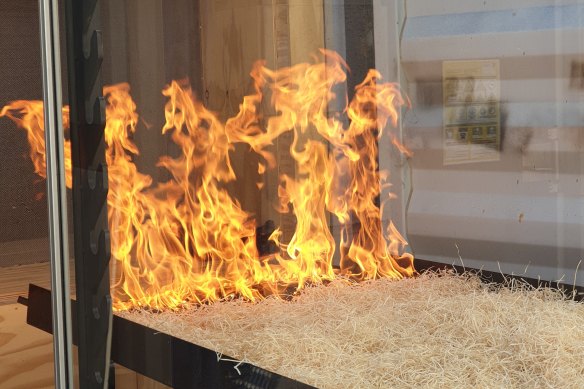
Tests in the pyrotechnic lab at the University of NSW have uncovered new details in urban fire dynamics.Credit: Dr Maryam Ghodrat
“This is a really frightening mess,” Bowman said of the LA destruction. “By all means forget about it, ignore it. But look what happened in LA – it just came swinging around and slammed into them. So that’s the choice. You can be reactive or proactive.”
Fires have been growing more savage and lethal in the United States. In 2018, the Camp Fire in Butte County in northern California burned for two weeks over more than 60,000 hectares, killing 85, destroying 18,000 structures and displacing more than 50,000 people.
After a dry spell in August 2023, wildfires broke out in Hawaii, once spared from the ferocity of uncontrolled conflagrations due to its tropical climate. On the island of Maui, the town of Lahaina was obliterated and 102 people were killed.
Former Fire and Rescue NSW commissioner Greg Mullins said that as the world grows warmer and drier, Australia, too, will face the prospect of fire invading our cities and towns.
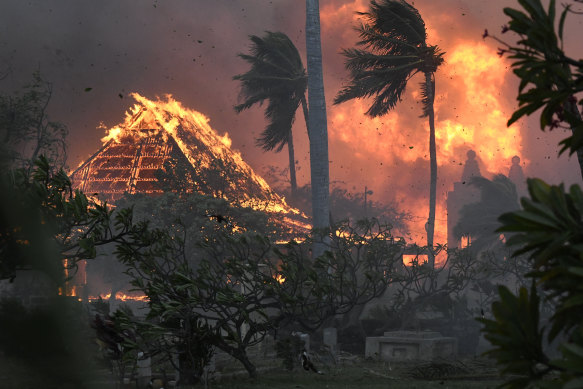
The hall of the historic Waiola Church ablaze in Lahaina, Hawaii in 2023.Credit: Maui News
He recalls visiting Stanford climate and fire expert Professor Chris Field during a study tour in 2019, who told him that as the planet warmed, Mother Nature was using fire as a tool to turn forest into scrub, scrub into grass, and grass into desert.
The only solution Mullins sees is to stop warming the planet. “We can’t stop the fires. We keep deluding ourselves that if we throw more money at it, or more resources, or invent some magic technology, we will be able to stop it.
Loading
“It’s bullshit. It has got beyond us.”
Just as fire conditions overwhelmed LA this week, Mullins said they would again overwhelm firefighters in Australia.
“We didn’t use to have a fire danger rating of catastrophic until 2009, and that was our fire services raising the white flag. They are saying, ‘On these days, we lose. Run away’.”
Get to the heart of what’s happening with climate change and the environment. Sign up for our fortnightly Environment newsletter.
Read the full article here



